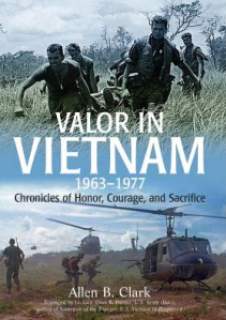 Wisconsin high school teacher James R. Ebert does a masterful job as he combines interviews and printed primary sources in this remarkable telling of the infantryman’s experience during the Vietnam War. Ebert tells the story of the US Army and a few US Marine infantrymen during the Vietnam War. He takes their story from induction into the service through basic and advanced individual training, arrival in Vietnam, their first combat experiences, the first killed in action they experience, in some cases the soldier’s death, and the freedom birds that take them back to the world. Ebert points out while infantryman accounted for less than 10% of the American troops in Vietnam, the infantry suffered more than 80% of the losses.
Wisconsin high school teacher James R. Ebert does a masterful job as he combines interviews and printed primary sources in this remarkable telling of the infantryman’s experience during the Vietnam War. Ebert tells the story of the US Army and a few US Marine infantrymen during the Vietnam War. He takes their story from induction into the service through basic and advanced individual training, arrival in Vietnam, their first combat experiences, the first killed in action they experience, in some cases the soldier’s death, and the freedom birds that take them back to the world. Ebert points out while infantryman accounted for less than 10% of the American troops in Vietnam, the infantry suffered more than 80% of the losses.
Ebert uses an interesting technique starting every chapter with a letter by Leonard Dutcher to his parents. Dutcher just wanted to do his part for God and country and go home at the end of his 12-month tour (13 for Marines). In the last chapter, we find out that Dutcher was killed. It caught me off guard and really added to the impact of the book. Ebert takes many of the soldiers and Marines experiences word for word from the individual himself through interviews or letters. It is a collective look at similarities of the many infantry soldiers and Marines in the war. It is a very personal account from many points of view.
This is an important book in Vietnam War literature. This is what the grunts really went through. I was left with somewhat of feeling of guilt from reading the book. Why? I graduated high school in 1971. Some of my high classmates went to Vietnam and fought. Everett Maxwell was killed in action. I went to college and was ultimately commissioned a second lieutenant in the infantry, went through airborne school and served three years active duty. My becoming an officer deferred my entry on active duty from 1971 to 1975. This is the reason for my reflective thoughts. Read by Jimmie A. Kepler in August 2004.






